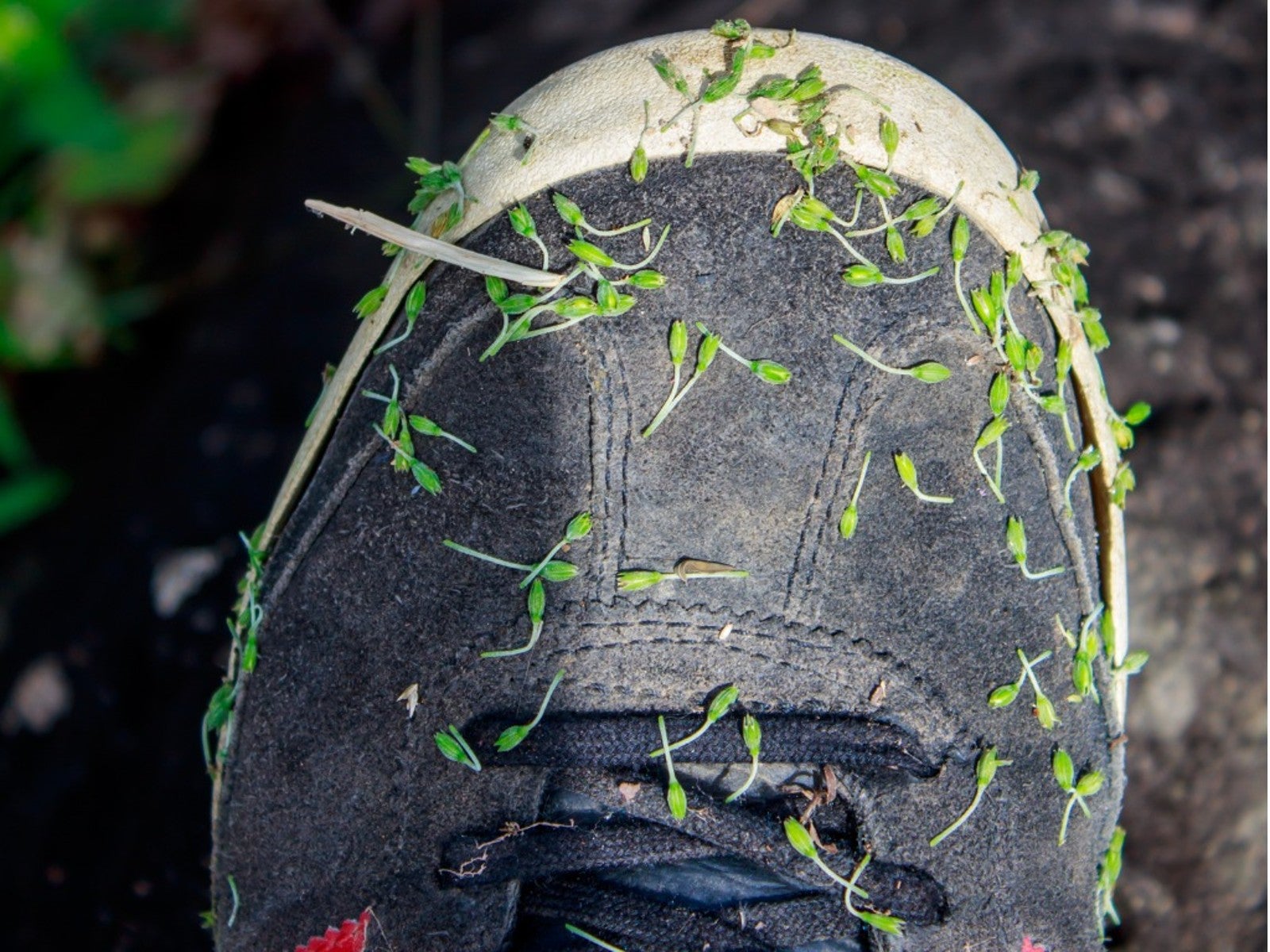Seeds That Stick To Clothing: Different Types Of Hitchhiker Plants


Even now, they’re lingering along the roadside waiting for you to pick them up and take them wherever you’re going. Some will ride inside your car, others on the chassis, and a few lucky ones will find their way into your clothing. Yes, weeds that spread by people, or hitchhiking, have certainly taken advantage of you this year. In fact, the average car carries two to four seeds for hitchhiker plants at any given time!
What are Hitchhiker Weeds?
Weed seeds spread in a variety of ways, whether traveling by water, air, or on animals. The group of weeds nicknamed the “hitchhikers” are seeds that stick to clothing and fur, making it difficult to dislodge them immediately. Their variously barbed adaptations ensure that the seeds will travel far and wide via animal locomotion, and most can be eventually shaken off down the road somewhere.
Although it might sound like all fun and games, the weeds spread by people are not only difficult to contain, but they’re also costly for everyone. Farmers lose an estimated $7.4 billion each year in productivity to eradicate these pest plants. Humans are spreading these seeds at a rate of 500 million to one billion seeds a year in cars alone!
Although the weeds within crop stands are annoying, those that appear in fields can be downright dangerous for grazing animals like horses and cattle.
Types of Hitchhiker Plants
There are at least 600 weed species that travel by hitchhiking with humans or on machines, 248 of which are considered noxious or invasive plants in North America. They come from every kind of plant, from herbaceous annuals to woody shrubs, and occupy every corner of the world. A few plants you might be familiar with include the following:
- “Stick-tight” Harpagonella (Harpagonella palmeri)
- “Beggerticks” (Bidens)
- Krameria (Krameria grayi)
- Puncturevine (Tribulus terrestris)
- Jumping cholla (Opuntia bigelovii)
- Hedge-parsley (Torilis arvensis)
- Calico aster (Symphyotrichum lateriflorum)
- Common burdock (Arctium minus)
- Hound’s-tongue (Cynoglossum officinale)
- Sandbur (Cenchrus)
You can help slow the spread of these hitchhikers by carefully inspecting your clothing and pets before emerging from a wild area full of seeding plants, making sure to leave those unwanted weeds behind. Also, reseeding disturbed areas like your garden plot with a cover crop can ensure that there’s too much competition for hitchhikers to thrive.
Once those weeds emerge, digging them out is the only cure. Make sure to get 3 to 4 inches (8-10 cm.) of root when the plant is young, or else it’ll grow back from root fragments. If your problem plant is already flowering or going to seed, you can clip it at the ground and carefully bag it for disposal – composting will not destroy many of these types of weeds.
Sign up for the Gardening Know How newsletter today and receive a free copy of our e-book "How to Grow Delicious Tomatoes".
Last, but not least, check your car any time you’ve been driving on unpaved roads or through muddy areas. Even if you don’t see any weed seeds, it wouldn’t hurt to clean your wheel wells, undercarriage, and any other location where seeds might be hitching a ride.

Kristi Waterworth was a regular contributor to Gardening Know How for many years, answering countless queries on plant pests and diseases.